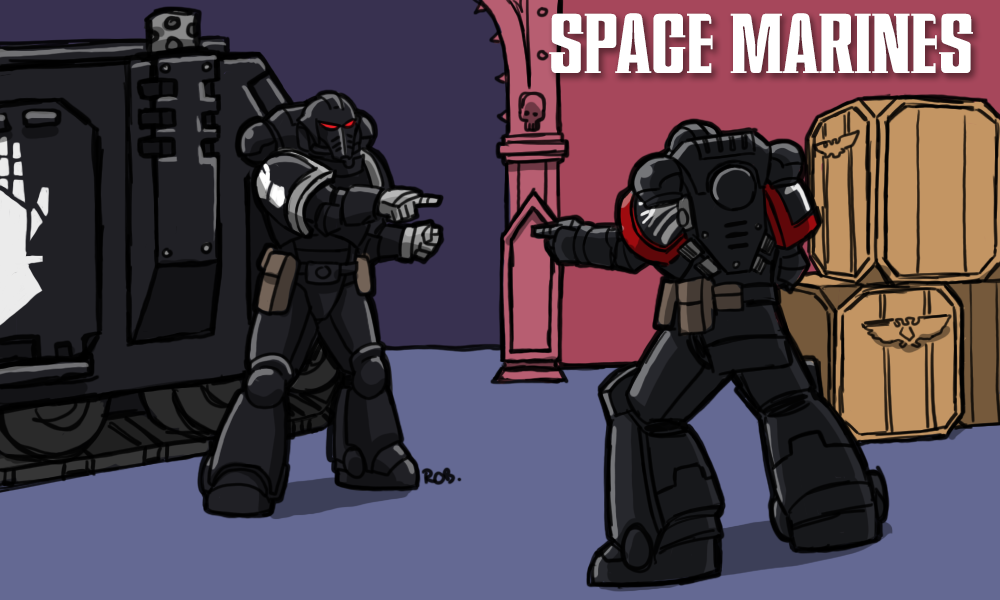9th edition is on the way, and with it a whole raft of changes to the factions of Warhammer 40,000. With the Munitorum Field Manual out in the wild and the Faction FAQs released, now’s a good time to start taking a look at what’s changed for all of our favourite armies. Today, Liam “Corrode” Royle is talking about Space Marines.
8th edition was a rollercoaster for the Adeptus Astartes. Right at the start of the edition they picked up a few tournament wins, mostly by virtue of having the first codex and the incredibly broken original version of Roboute Guilliman. As other books appeared it became quickly apparent that the Marine one wasn’t really much good, and although they had the occasional mini-resurgence with builds like the Repulsors-and-Guilliman one, they mostly ended up as haunters of the bottom tables.
Enter the 2.0 codex. The book was substantially revamped, with all-new stratagems, a pile of new units, and a mighty six supplements to represent the First Founding Chapters which didn’t have a separate book of their own. The base codex is good enough, though on its own it would probably not have pushed Marines to the top of the pile, but the supplements were something else – White Scars, Raven Guard, and Imperial Fists all produced highly competitive armies, but the key component here was Codex Supplement: Iron Hands. The Iron Hands book is one of the most broken things Games Workshop has ever produced. On first release it was honestly hard to identify the specific problem – people were winning with so many different builds, using so many different options, that saying ‘just change this’ was genuinely difficult. Even after two rounds of FAQs it was still the unquestioned top faction in the game, and only with another FAQ and a fundamental change to the Marines’ core mechanic of Doctrines that Iron Hands finally looked like being merely good rather than unquestionably the best.
Unfortunately for those interested in asking how things would have shaken out meta-wise after the February changes to Space Marines, the Covid-19 pandemic hit two weeks later and put a premature end to 8th edition competitive play. Now we’re looking forward to 9th edition and another raft of changes – so let’s talk about how that looks like it might play out.
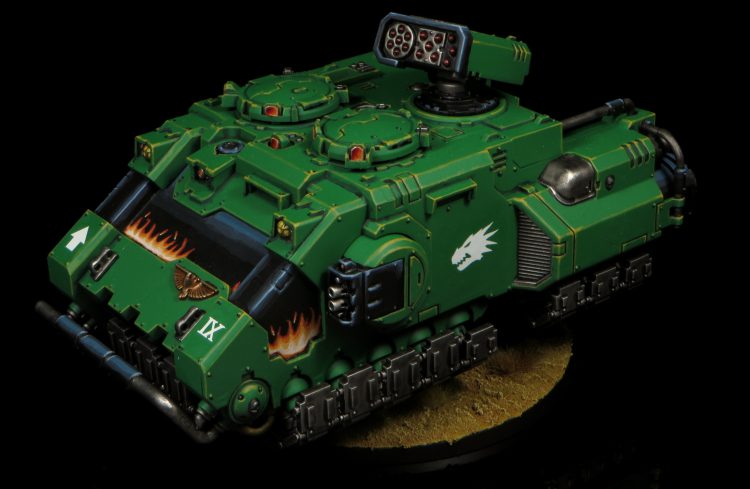
The Points
Unlike many other factions, Space Marines don’t seem to have gotten a straightforward algorithmic points change as described in our review of the overall points changes. Instead, they got a much more targeted look, probably to do with both their dominance in late 8th and also the fact that they hadn’t had a real review since their 2.0 book, since arriving in August means they were too late to get any changes in Chapter Approved 2019 in December.
They also lost some units in the transition to 9th, with some options being sent to the Legends Farm upstate, and no, you can’t visit. One that will please most people is the demise of the Chaplain Venerable Dreadnought, a unit which caused continual headaches in 8th. Lias Issodon also departs the stage, which isn’t unsurprising since he’s never had a model and, again, caused some problems when used alongside the Raven Guard supplement. Probably less relevant to 99.9% of you out there is the departed Thunderhawk Transporter – sorry to the one person on earth who has been dreamcrushed by it flying back to the Battle Barge for good.
Of course, this is a new release and like night follows day and day follows night, there are new Space Marines in the starter set. Sorry, not starter set, ‘limited release launch box’ or whatever the marketing team dreamed up as a reason that a set with two armies and a rulebook in wasn’t a starter. The Indomitus box contains an almost completely new set of models to add several capabilities that Primaris Marines previously lacked. Pointing and laughing at Lias as he disappears into the shadows like the sad goth he is come the Bladeguard Veterans and accompanying Ancient, Outriders, and Eradicators, along with the Judiciar, basically a Chaplain who really wants to tell you the time. We also have a new kind of Intercessor, packing heavy bolt pistols that look very much like they lifted entire boltguns from smaller, less adequate Firstborn Marines and started wielding them one-handed, and the new-style Astartes chainswords. The good news on all of this stuff is that it’s priced to move, with Eradicators in particular offering a very spicy anti-tank option which has seen some Eldar players weeping over their Fire Dragons. Pretend I took the time to make one of those virgin/chad memes with an Eldar and a Space Marine, respectively. This doesn’t even cover the other previewed models which intriguingly now have points in the Munitorum Field Manual booklet but don’t yet have models you can buy or datasheets to try and analyse.
Also in good news, Forge World continues to offer surprise and delight – although a few units saw hefty increases (Relic Leviathan and Deredeo Dreadnoughts, the latter a bit surprisingly), others were treated to minimal changes, and one standout is looking around guiltily at an unexpected reduction in its cost, that being the Relic Contemptor. There’s every possibility that these costs were adjusted with the new Forge World indexes in mind and all will be made clear when those release, but for now, we are long on Relic Contemptors. The Relic Whirlwind Scorpius also saw a favourably minimal change. It’s worth noting that several of these units changed slot – the Sicarans and Scorpius move from Elites to Heavy Support, as do the Tarantula turrets (neatly resolving the oddity of a Fast Attack choice which could not, in fact, move).
Some units did get hit and hit hard. If you were heavily invested in Thunderfire Cannons, Centurions, Whirlwinds, and Eliminators, well, those have all gone up a lot.
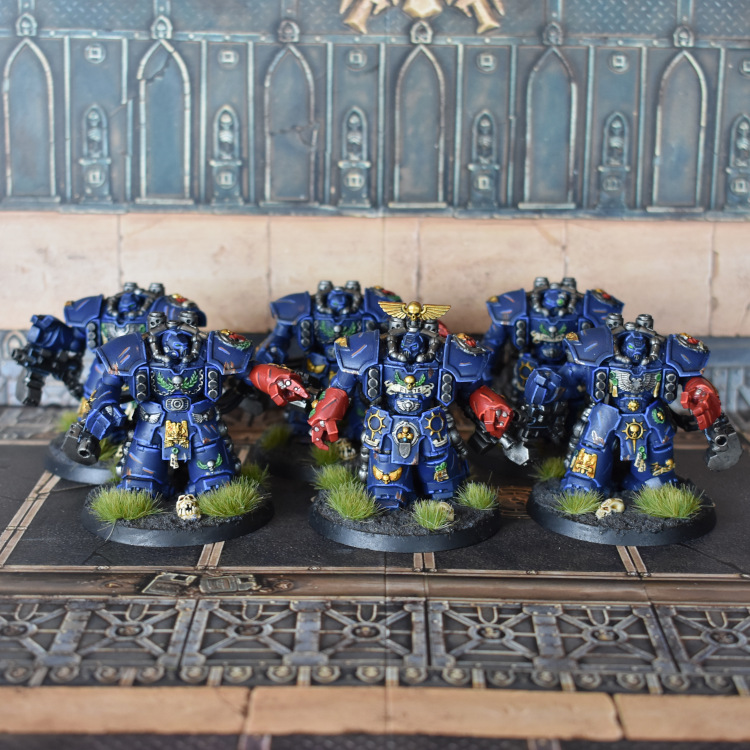
Impulsors also went up by a good chunk, as did the Invictor Warsuit. Some of the changes read like someone went scrolling through 40kStats and yelled DOUBLE THE INCREASE every time they saw a unit mentioned in a top 4 list, which to be fair was probably not unwarranted. Unsurprisingly with this metric in mind, Terminators didn’t go up much at all, and maybe this is the edition they’re finally good again – at the very least, a block of storm shield Terminators can drop in on an objective and present a solid wall of 2+/3++ (potentially 1+/4++, we’ll see how that shakes out) wounds to get through. They might even do Actions, putting down their gurt hammers so they can raise a flag or do a bit of product scanning.
As a side note, many units look like they’ve had horrendous increases, but it’s all to do with their weapons being in-lined into their cost now – Aggressors, Suppressors, and Hellblasters all had huge increases on the base model, but the guns got zeroed out, so they barely changed at all (or in the case of Hellblasters, stayed the same cost as 8th, which seems about right since they were drastically overcosted before). Inceptors are particularly big winners here, with the plasma version getting a net decrease compared to 8th and gaining the Blast rule to boot – expect to see these showing up as suicide bombers to take out the nearest power-armoured target they can find.
Looking out beyond the base codex and into the supplements, most of the changes are about what you would expect – broadly, every character gained 5-10 points. The big exception here is Iron Father Feirros, who took a giant 30pt increase up to 140pts. Not before time, some will feel. Guilliman also went up 30, but that’s about in line with other equivalent models in the game, so he’s fine still and has big upside now that you can slot him into a Supreme Command for ‘free’ and still have three HQ slots to work with in a single Battalion.
There’s too many changes here to go through exhaustively, but overall our assessment is – this is fine. Some of the changes hurt a little, and some of them seem kneejerk – I’m not sure punting Centurion Devastators back into being completely unusable was a totally fair reaction to them being good for about 9 months, in a limited subset of their available armies – but overall Marine players can probably accept that the army needed some tweaking to get costs to the right place, and overall the faction is still really good. Far better this fate than others.
The FAQs
Most of the Marine changes in the FAQ updates were just fixing wording for 9th – ignoring Look Out Sir with snipers, updating references to say Engagement Range, removing the now-meaningless Power of the Machine Spirit rule, that kind of thing. I’m just going to copy-paste the list of real changes from our FAQs hot take rather than re-write it here, because there’s no profit in reinventing the wheel:
Codex: Space Marines
- The Land Speeder Storm joins the rest of Open-topped vehicles in that the movement of the vehicle affects the shooting of models within and embarked models can only shoot pistols while the vehicle is within Engagement range of enemy units.
- The Indomitable Successor Chapter Tactic now has you auto-pass Combat Attrition tests.
- The Big Guns Never Tire Stratagem no longer exists.
White Scars
- White Scars can now advance without penalty for any Chapter Tactic models, not just bikes. A minor bonus.
- Master of Snares won’t work on models with a minimum move characteristic.
Ultramarines
- The Calm Under Fire Warlord trait has been tweaked so that you don’t incur a -1 penalty to hit rolls after you make a Fall Back move.
- Defensive Focus now allows you to fire Overwatch without using the Stratagem and the units that do so cannot fire Overwatch again in that phase, so you can’t double-dip using this and the Fire Overwatch Stratagem.
- If you kill the vehicle that Sergeant Chronus commands, you don’t score any objectives related to slaying the Warlord until you kill the Chronus model that’s set up afterward.
Imperial Fists
- Captain Lysander’s Icon of Obstinancy now lets friendly IMPERIAL FISTS models within 6” automatically pass Combat Attrition tests.
- The wording on the Architect of War Warlord trait has been updated to give +1 to armour saving throws against ranged attacks with an AP of -1, helping avoid save issues. The same has been done for the Bolster Defences Stratagem.
Faith and Fury
There’s only one notable change in Faith & Fury that doesn’t fall within our targeting/general updates, and that’s for the Black Templars:
- Devout Push can affect a unit that isn’t within Engagement range of any enemy units. This is pretty silly, and is guaranteed to only have silly consequences.
Overall a mixed bag. A nice little buff to the White Scars Chapter Tactic, a couple of obvious changes around things that previously auto-passed Morale. On the more negative side, deleting Power of the Machine Spirit and Big Guns Never Tire rather than doing anything interesting to update them is lame. It feels like a bit more effort could have been made there to use those rules for something new instead of just trashing them entirely.

How They Play
With the supplements, Space Marines became a lot more diverse than they’ve been previously – every sub-faction really does play very differently. In 8th this mostly manifested with Raven Guard playing heavily with Centurions, Imperial Fists speccing into artillery, White Scars focusing on wrapping and trapping with floods of Intercessors, Iron Hands playing whatever they wanted, really, and Ultramarines and Salamanders looking on forlornly.
We’ll start this section with some general observations, and then look at the individual sub-factions separately to see if there’s any key things they do particularly well. Note that this is just going to cover the six main supplements – this is a faction focus for a brief look at the new edition, not a deep dive on Space Marine tactics, so we’re going to ignore Black Templars for today and assume that most of the advice for successor chapters is covered in the relevant sub-faction heading.
First up, let’s talk about Impulsors. Impulsors were already good in 8th, though relatively few people played them – in part probably just because the model didn’t exist for months after the codex came out, which is one of those things that could only happen in a GW game. Still, some people had a lot of success with them, and towards the end of 8th’s life they were starting to make their presence felt. In 9th edition they become much more important, because your goal is to get onto objectives and stay there. A flying transport with a 14″ move and a 4+ invulnerable save is a great way to do exactly that. Impulsors are very versatile – they can run up and dump Marines out onto objectives to do Actions or obsec onto things, or you can stay inside the ride and force your opponent to kill the surprisingly-tough tank first. Their shooting isn’t amazing but it isn’t terrible – two storm bolters is enough to matter against small GEQ squads and the like. They’re also great for screening, since they’re big and reduce charge distances, and they’re really fun for bully-charging stuff – many things that have good shooting can’t do much against an Impulsor in melee, which makes them great for slamming into enemy shooting to reduce your opponent’s ability to blast you off objectives. Two-three sets of five Intercessors in an Impulsor is a fine way to start a Marine list in 9th.
Second, Centurions are mostly dead. We talked about this above in the points section, and while I’ve seen lists that have Assault Centurions in still, the version of Raven Guard which took 18 of the damn things is history. The majority of people will not be sad about this. The Imperial Fists bolter version was also on dicey ground after the doctrine changes and now looks to also be pointed out of existence, too.
Speaking of mostly dead, the slam Captain is not a thing of the past necessarily, but does see some reduction in its application – the new rules prevent you from just flying over screens (you can’t move through their Engagement Range) and you must make it into combat with every target of your charge, so a single guy with a thunder hammer is no longer able to simply leap in great bounds and assassinate whatever he fancies. It’s also less possible to create the truly disgusting ones we talked about in Hammer of Math previously, since weapon buffs no longer come in last in the modifier stack – so you can’t add Strength to a guy and then get an exponential effect from the thunder hammer doubling it. Never say never – I’m sure there will always be utility found somewhere for a guy with a big hammer landing on things and hitting them with it – but there’s at least going to be fewer as they become less of a sure bet.
Turning back to things you will see more of, Eradicators have instantly started popping up in all kinds of lists. They offer something Primaris really needed, i.e. decent ranged tank-killing power, and with the new Strategic Reserves rules it’s much easier to get them to actually show up and do that job. For 120pts/unit, expect to see 6-9 of these routinely.
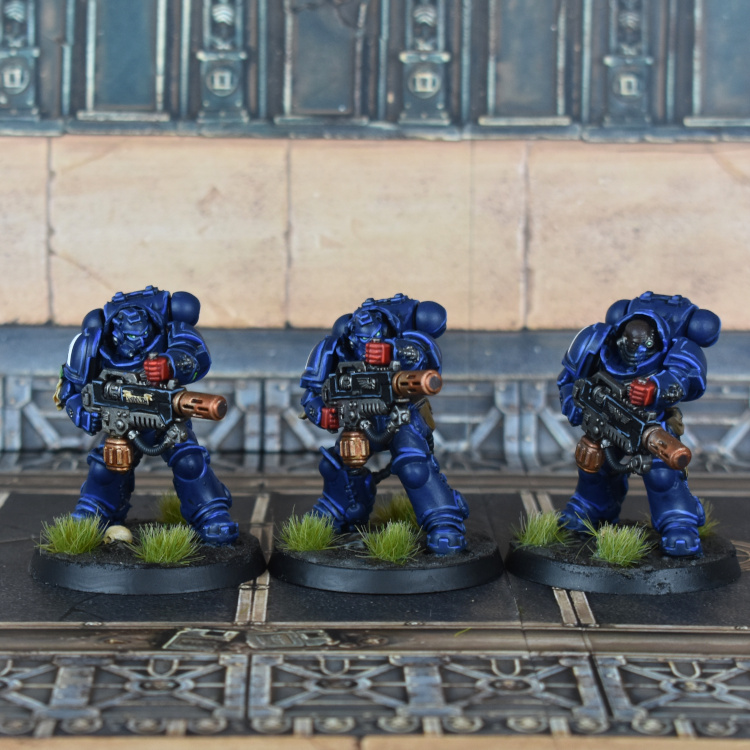
People also seem to be trying out Bladeguard Veterans a bunch, especially in the more melee-focused Chapters like White Scars. It’s especially worth noting that while they have three wounds apiece, they aren’t Gravis, so can ride in an Impulsor. They also seem pretty hot in Blood Angels which really benefit from them being S5 – with +1 to wound that’s a spicy meatball. The Sons of Sanguinius have their own book because they’re special so they’re not really the subject of today’s article (we’ll have another one for Team Edward soon!) but it’s worth mentioning at least.
Finally, we should mention Infiltrators. With 9th’s heavy emphasis on early holding of objectives, Infiltrators – despite going up to a meaty 24pts – become even more valuable than before. They’re great for pushing out into midfield to take those points early on, are able to give themselves -1 to hit to protect them from incidental fire, and with the new smaller board sizes their anti-deep strike aura becomes even more valuable – particularly when units are going to want to come out of Strategic Reserves. If you’re looking for a similar thing on a budget, Incursors do most of the same work, but of course they don’t bring that oh so aggravating aura.
With those notes out of the way then, let’s look at the different supplements and the changes that 9th has wrought.
Imperial Fists
I never really noticed that there was no codex-compliant chapter starting with anything earlier in the alphabet than an I so I was sure I’d missed one, but apparently that really is the case and so we start with the Imperial Fists.
Fists have been hit pretty hard by a bunch of these changes – Whirlwinds and Thunderfire Cannons went up, and Centurion Devastators have gone up along with heavy bolters and hurricane bolters, so those all slide down the list of options. Losing the Siegebreaker specialist detachment from Vigilus in the GT pack is also a blow. In better news, the Relic Whirlwind Scorpius only went up a little bit, and as highlighted above the Relic Contemptor got cheaper too – and Fists are a great chapter for those, with Tank Hunters giving the firebase version with two twin lascannons and a cyclone missile launcher a ton of punch, not to mention the first-turn power of Devastator Doctrine with Legacy of Dorn.
The Fists also benefit from auto bolt rifles normalising to the cost of the other bolt rifles – all Intercessors are 20pts now regardless of equipment. The higher shot count for the auto bolt rifle pairs well with exploding 6s from the Chapter trait, and in 9th edition where your units want to be on the move it’s helpful to be able to do that at full effectiveness. An extremely motivated person could even pair a unit of them with the Bolter Drill stratagem, though it’s a big expenditure unless you’re pointing at a horde of something that you really want dead.
Fans of Terminators can also profitably use them in the Imperial Fists book. Much the same consideration applies to storm bolters as to auto bolt rifles where Terminators are concerned, and Fists have a couple of different ways to improve their armour saving throw – a unit of them in cover on an objective with one or both of those buffs applied can potentially be very hard to shift while putting out a respectable amount of anti-infantry firepower.
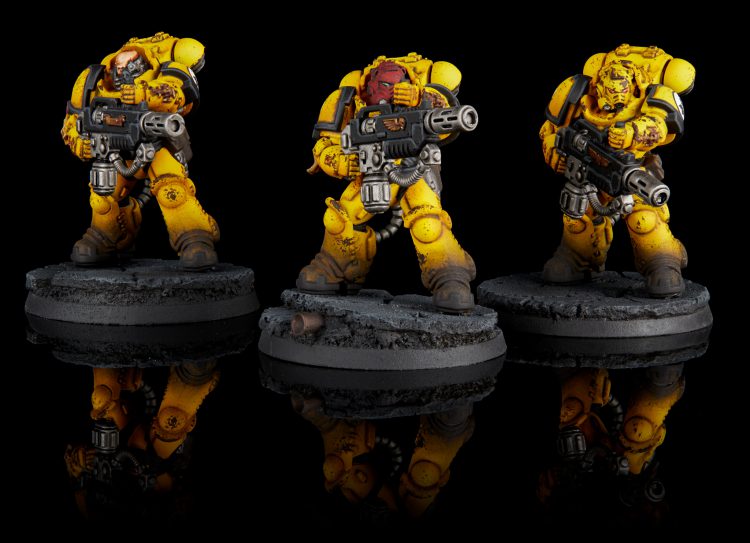
Iron Hands
As 8th ed wound down it looked like Iron Hands were finally joining us all on the regular Plane of Balance instead of whatever GW was thinking when they wrote the book originally. Good news for most people, bad news if you were one of the many, many Iron Hands players who ‘just always loved the lore’ and unaccountably have always had three Chaplain Dreadnoughts which are, definitely, real ones from Forge World that you bought years ago and just never mentioned before. Expect to find out shortly that said players love the aesthetics of Ad Mech or are in fact very devoted to Grandfather Nurgle and the Death Guard and always have been.
Looking forward to the future, what do we make of Iron Hands in 9th edition? They don’t stand to gain as much from some of the new changes as the other Chapters do. For most of the time it was relevant they were already moving and shooting Heavy without penalty, and though I’m sure Hands players will be glad to have that rule back for their vehicles at no cost it’s now a universal thing so they’re not special for having it. They still have their triple Chapter Tactic of course, but that’s also been somewhat weakened since they’re going to be firing Overwatch a lot less of the time now, and it will cost CP to do so – and even more CP if they want to boost it. At least their stuff all has Feel No Pain, which is a good way to keep units alive and sitting on objectives for points.
Other noticeable changes for Hands include Iron Father Feirros being the only Marine character to take a significant above-rate cost change, jumping to 140pts from 110pts. Not great if you wanted to run the ‘horde of Intercessors’ build which he helped support, although frankly at 140pts he’s still fine for the utility he offers, no matter how many Iron Hands players tell me he was actually very fair and balanced at 110pts with his original rules.
In terms of changes to builds then, what do we expect? Well, Hands were the prime abusers of the Chaplain Venerable Dreadnought, and that is now the Legends Chaplain Venerable Dreadnought, and hopefully is disappearing into the Warp never to be seen again. So those are out. Slightly better news in the form of the Relic Whirlwind Scorpius, which didn’t go up by much, but is now a Heavy Support choice and competing for very limited slots – not to mention that as there’s only three Heavy Support choices in a Battalion, you can only squeeze in a single Relic HS choice per. With the vast majority of the old Relic Dreadnoughts and tanks now being HS, that puts the squeeze on a bit. On the plus side you can pay the relic tax with Tarantula turrets now, so that’s something.
We mentioned previously that Intercessor horde was a thing some Iron Hands players were trying in the last edition, and that seems on its face not to be a bad idea – a big blob of Intercessors that can push out hard into midfield and take points, relying on the Feirros 5++ bubble and the Father of the Future ability to give them a 5+ Feel No Pain as well, seems like something to have to deal with. Mortis Dreadnoughts also still exist and went up by a mere 10pts, so the old strategy of throwing a bunch of lascannons on one and then making it a character to hide it is still there. A smart player can now try and counterplay it by shooting off its protectors, but it’s straightforward enough to have it waddle along with the aforementioned block of Intercessors and keep it in range of enough different units that that is hard to achieve.
Other than that, a bunch of the answer for Iron Hands is ‘we’ll see’ – receiving historic levels of nerfs right before the edition changes kind of leaves you in a place of needing more data to figure them out again.
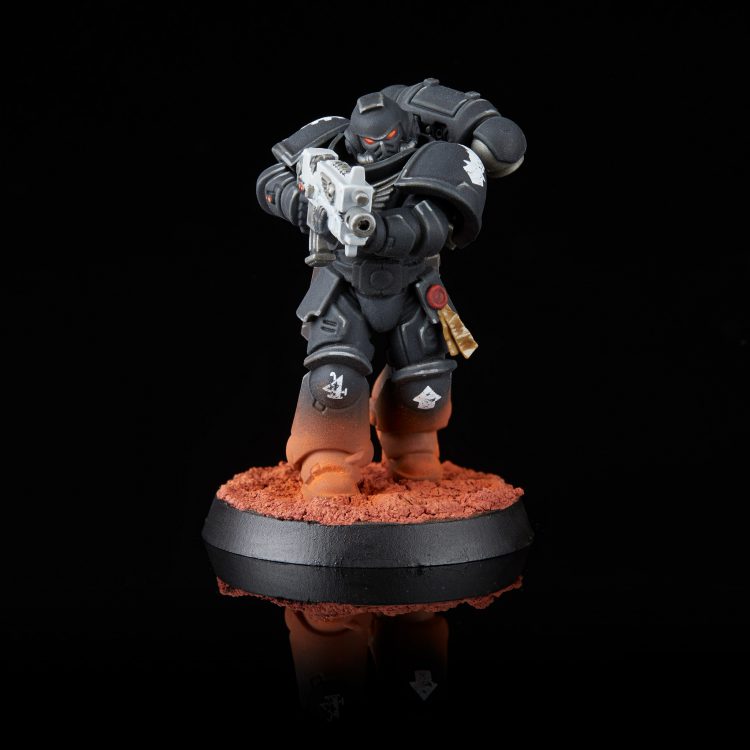
Raven Guard
There’s going to be a large number of black-wearing Centurions on eBay soon, mark my words (really the smart play is to hold on to them until the Wheel of Balance inevitably turns again, but still).
With the demise of the LVO runner-up build of ‘literally all the Centurions’, where do Raven Guard turn now?
Well, first of all, don’t throw all of those Centurions away. They definitely took a big hit from the 9th edition points changes, but a single squad of them using the Raven Guard’s cheap, powerful deep striking option is still a big threat to be holding over someone’s head. With the ability to boost your charge out of deep strike, they’re a great option for taking an objective and keeping it – drop them out of the sky, pile into an objective-holder, smash them to pieces, and then claim the point for your own with a block of T5, 2+ save wounds. Speaking of cheap deep strike, don’t sleep on it for Eradicators – save yourself the limitations of Strategic Reserves and simply drop them out of the sky instead.
The Master of Ambush Warlord trait also gains a powerful new application in 9th edition – pressing forwards for early objective holding. This was always a relevant use, but with 9th’s new focus on getting models onto objectives as early as possible to be holding them in your second Command Phase, the Raven Guard’s ability to push a unit forwards at the start of the game is very useful. Between this and the obvious use of Scouts, Infiltrators, Incursors, and Eliminators, it’s possible to build a very aggressively-deploying Raven Guard army that takes over the board on turn 1 and forces the opponent to play a similarly aggressive game if they want to score any points at all from the primary. Speaking of Warlord traits, the other possible application is to utilise Swift and Deadly to create pseudo-White Scars (for which see more below) – again 9th is going to be a game of movement and aggressively taking and holding objectives, and being able to advance and charge is a very useful ability for not only clearing your opponent off an objective but then taking it for yourself. With this in mind, auto bolt rifle-focused Intercessors have a potentially great application, being able to shoot while advancing before charging in to take an objective.
The other slightly disappointing option for Raven Guard now is that Eliminators got more expensive and can’t double up the sergeant buff and the doctrine any more – so no absurd mortal wounds on a 4+. The flipside is that you do get the benefit that you can shoot the Sergeant’s gun instead of wanting to use him for their native +1 to hit/wound ability, so you don’t lose as much as you would think – the extra shot . They’re still good and very thematic, but the days where every single Raven Guard list had 9 of them in are probably gone.

Salamanders
It’s fair to say that Salamanders were bottom of the pile in 8th edition. Partly this probably has to do with their book coming out last, and not having the obvious applications of Imperial Fists – their doctrine was heavily weighted towards small Marine weapons at a time when those weren’t very efficiently costed, and the one gimmick they did bring was quickly nerfed in a savage (some would say unnecessary) fashion. They could bring some meaty combat characters, but didn’t have as easy of a time getting them there as the more melee-oriented Raven Guard or White Scars. The hilariously broken Self-Sacrifice ability saw immediate correction. Near the end of 8th’s life a build using a large block of Assault Terminators with storm shields to block for more fragile shooting units (Kataphron Breachers and the like) came into being, but it’s not likely to re-emerge in 9th edition thanks to the CP changes.
So where now for Salamanders? Well, they do gain nicely from some of the new units. If you’ve been reading and waiting for me to mention Eradicators, congratulations! The aggressively-costed new Primaris unit toting melta rifles is definitely well suited to the Salamanders and their melta-boosting doctrine ability. As mentioned above, the obvious use case for Eradicators is to go into Strategic Reserves and then emerge on turn 2 – perfectly timed to tick into Tactical Doctrine and unleash a pile of AP-5, +1 to wound melta fire anywhere within 30″ of a board edge. Don’t forget about The Crucible of Battle either – even if your units aren’t carrying melta or flame weapons, you can throw +1 to wound in there too. Tempting on guns, but also potentially great on e.g. Bladeguard Veterans, especially if combined with Strength of the Primarch – S6 AP-3 D4 master-crafted power swords, wounding anything in the game on 4s, sounds pretty good to me.
One unresolved question from the FAQs is how the Born Protectors stratagem works with the new Overwatch rules. It allows you to fire Overwatch as if being targeted – presumably this works like the similar Ultramarines stratagem, but it hasn’t currently been clarified. Still, having access to a second source of Overwatch which also allows you to heroically intervene is definitely helpful.
Also unresolved is quite how their Chapter tactic interacts with Eradicators – do you get one re-roll or two? Helpfully the rulebook defines all the different types of ‘shoot twice’ in the game, and whether those are one round of shooting or two separate ones, and Eradicators share wording with none of them. Hopefully we find out soon – they’ve already said that some of the datasheets in Indomitus are simplified (which is how the storm shield issue crept in). The Chapter tactic is another strength for Salamanders incidentally, given that we seem to be seeing a lot of small 3-model units in the new Primaris range – the relative power of a single re-roll is greater if you have many small units than a few big ones, and so the Salamanders are well pleased with the common new unit sizes.
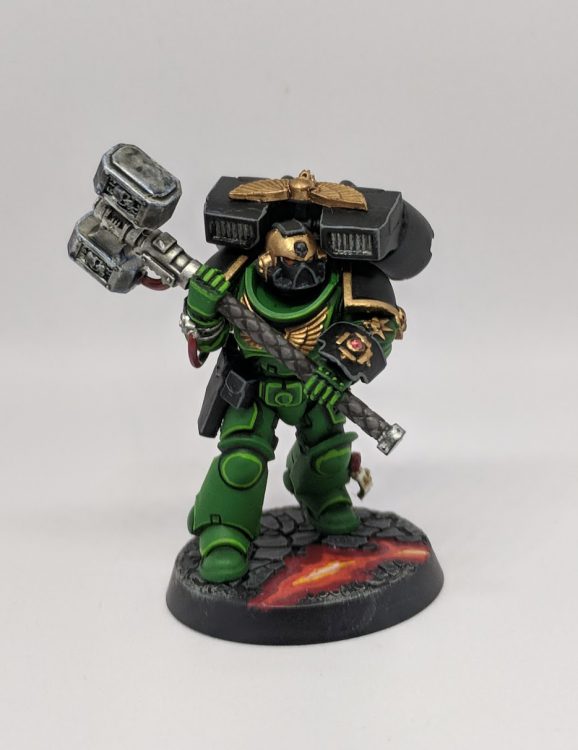
Ultramarines
At some point during the Reign of Terror that was late 8th ed, one of the Goonhammer contributors remarked that while compiling Space Marine tournament results he would generally find that they stopped showing up past about the top third of the standings for any event – until he scrolled to near the bottom, and found all the Ultramarines players. This isn’t a totally fair reflection on Guilliman’s sons – to some extent they were simply the middle child against the meta-warping power of Iron Hands and Imperial Fists and the genuinely different and still powerful gameplay offered by White Scars, and therefore generally played by enthusiasts while competitively-minded players were using other armies. I guess in this analogy the Raven Guard are the mopey goth kid who’s really good at art or something so they get a pass, and the Ultramarines and the Salamanders are just hanging out in their parents’ basement complaining that everyone else gets the attention and not them. Maybe I’m stretching this too far.
Anyway, let’s talk 9th. Ultramarines certainly have some interesting changes in 9th edition. As stratagems go, Rapid Redeployment has only gotten more powerful in an edition where you’re required to utilise alternating deployment and then a straight roll-off for first or second – you can deploy aggressively with Ultras and then pull back to a more defensive position if you lose the roll-off, or vice versa. Defensive Focus is equally a big buff in a world where Overwatch is much rarer – not only do you get a pseudo-For the Greater Good, you get it when nobody else gets much of anything in terms of deterring chargers.
Calling back to the Salamanders section and the subject of stratagems that don’t work, we still don’t have any word on how Cycle of War interacts with the new way Doctrines function, so I guess you can pay 1CP to break the game if you really want to.
The eternal tug of war between whether Roboute Guilliman or Marneus Calgar is a better option continues, and Guilliman looks to have gained advantage from the way the new Supreme Command detachment works. You can now take a Battalion and have all three HQ slots free (which is good, because Space Marine characters are powerful), keep your 12 starting CP, and gain another 3 on top to start with 15 – in an army with 50 different stratagems to choose from (well, 48 now that two of the base codex ones have been deleted, whatever), having more CP is undoubtedly a good thing, never mind the comparative advantage of having more of a resource than anyone else does.
Picking out a unit that Ultramarines do better than anyone else does, Aggressors seem like they might have some worthwhile play in 9th. Ultramarine players often took them anyway, since their Doctrine allows you to actually move the fat boys and still take advantage of their shoot twice rule, and now that the board is a foot shorter and four inches thinner, their relative threat range looks better in context. There’s also, of course, the pile of Ultramarines special units – they don’t offer too much that’s special, but Honour Guard soak wounds for characters and Bladeguard Veterans don’t, so that’s a slight advantage (though of course even at their max strength of Two Guys they don’t actually block shooting at the character in the first place).
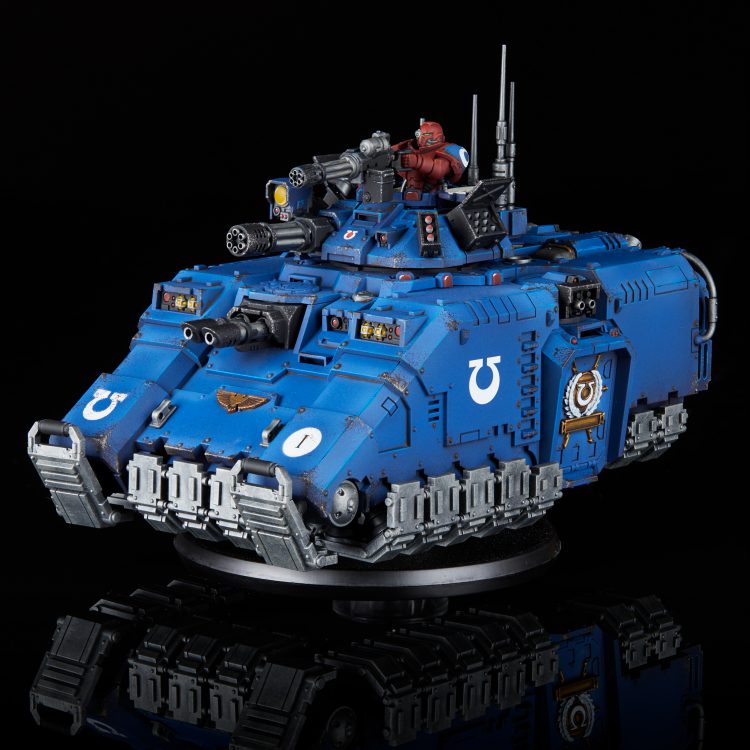
White Scars
White Scars get off remarkably lightly from the 9th edition changes, and in fact gain a buff to their Chapter tactic as outlined above. The Scars were a bit of a sleeper army in 8th ed, with some people playing them to great success, but being less of an I-win button for most players than just using the Iron Hands rules and getting to play with better maths than everyone else did. Their threats were also a lot more diffused than their near-equivalents in the Raven Guard – you didn’t really see a White Scars list that went all-in on Centurions the way that RG could. Instead they tended to be more Eldar-like, combining units – many of them quite ordinary – with their powerful psychic lore and relics in a way that made them more than the sum of their parts. Coming into 9th ed then, you can look to play Scars in a very similar way to how you would have played them previously, but with some spicy new additions,.
First up are the unsurprising addition of the Bladeguard Veterans. What if you took a great new melee unit, gave it the ability to advance and charge and fall back and charge, and made its weapons Damage 3 in the Assault Doctrine? Also what if they were under the Khan’s +1 to wound aura and had the Litany of Melee Doom to re-roll wounds? The additional threat range and output that Bladeguard get in White Scars is significant.
Also an obvious addition are the new Outriders – finally the bike Chapter (no, not Ravenwing) has Primaris bikes, and they’re Primaris bikes which are tough, fast, and throw out a ton of melee attacks. If these can survive to turn 3 they’re offering a fistful of attacks each at AP-2 D2, which is spicy. His datasheet isn’t actually out yet, but the new Primaris Chaplain on Bike also seems like an obvious candidate for 9th edition White Scars lists – you lose out on the ability to FLY, although that’s less powerful in 9th anyway, but presumably gain Toughness and Wounds over the regular bike. Fingers crossed he also gets the Devastating Charge rule that Outriders have and offers a truly powerful smash Chaplain choice.
Like the Raven Guard, Scars are also a place that Assault Centurions might survive – probably not en masse, but a single squad of them outflanking (with the White Scars native stratagem to keep it cheap) presents a credible melee threat, and they can even hike their fat asses around the table at an ok pace with the ability to advance and charge (and don’t forget Plume of the Plainsrunner can give them +1 to advance rolls, so at minimum they get to move as far as a normal Space Marine!)
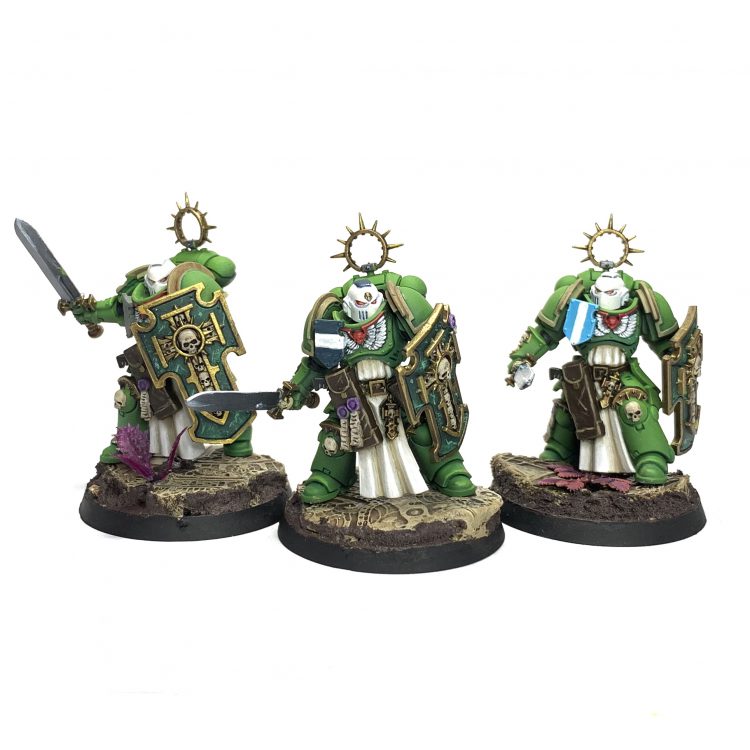
Lists
Most of these articles have gone over particularly good or bad secondaries for their particular faction, but with Space Marines that’s kind of an irrelevant task – with their diversity of unit choices, there’s nothing on the list that a Space Marine army can’t at least attempt to attack and make a good go of. It really comes down to your individual army and what choices you’ve made with it – the obvious one is that you won’t dip into Warpcraft if you have no psykers, but also maybe don’t take Linebreaker if you’re playing a slowly-advancing Iron Hands castle which plans to never move further than mid-board, and so on and so forth. Instead let’s look at some army lists, one each per sub-faction – and remember these are just the thoughts of one person trying to write different lists for six factions (well five, I stole one from Innes for White Scars), so sorry if you get tired of seeing the words ‘Relic Contemptor’ over and over again.
Imperial Fists
Battalion
- HQ
- Bladeguard Captain – 105
- Bladeguard Lieutenant – 90
- Master of Sanctity Primaris Chaplain – 85
- Troops
- 5 Intercessors, auto bolt rifles, thunder hammer – 115
- 5 Intercessors, auto bolt rifles, thunder hammer – 115
- 5 Infiltrators, Helix Adept – 130
- 5 Infiltrators, Helix Adept – 130
- Elites
- 3 Bladeguard Veterans – 105
- Judiciar – 85
- Relic Contemptor – twin lascannon, Dreadnought close combat weapon, storm bolter, cyclone missile launcher – 193
- Relic Contemptor – 2x twin lascannon, cyclone missile launcher – 210
- Heavy Support
- 3 Eradicators – 120
- 3 Eradicators – 120
- Dedicated Transport
- Impulsor – 2x storm bolters, shield dome – 131
- Impulsor – 2x storm bolters, shield dome – 131
- Impulsor – 2x storm bolters, shield dome – 131
This is a fairly rough draft of a list that I hope plays to the Fists’ strengths in 9th. The two Relic Contemptors provide the key fire support in the early game, with the heavy-weapons focused one sitting back and blasting while the other advances and offers some high-strength midfield threat to support there. The Eradicators stay off the board early on and arrive from Strategic Reserves on turn 2, while the Impulsor party buses push forwards with characters, Intercessors, and Bladeguard inside. The Infiltrators having Helix Adepts is kind of just to fill out those points – Primaris units are very inflexible and there’s not a lot else to spend points on except stubbers on the Impulsors, which aren’t modelled (a smarter man would have magnetised them).
Iron Hands
Battalion
- HQ
- Iron Father Feirros – 140
- Captain with jump pack, thunder hammer, storm shield – 155
- Bladeguard Lieutenant – 90
- Troops
- 5 Intercessors, stalker bolt rifles, thunder hammer – 115
- 5 Intercessors, stalker bolt rifles, thunder hammer – 115
- 5 Intercessors, stalker bolt rifles, thunder hammer – 115
- 5 Intercessors, auto bolt rifles, thunder hammer – 115
- 5 Intercessors, auto bolt rifles, thunder hammer – 115
- 5 Intercessors, auto bolt rifles, thunder hammer – 115
- Elites
- Chief Apothecary Primaris Apothecary – 60 – Father of the Future
- Judiciar – 85
- Relic Contemptor – twin lascannon, cyclone missile launcher, Dreadnought close combat weapon, storm bolter – 193
- Relic Contemptor – twin lascannon, cyclone missile launcher, Dreadnought close combat weapon, storm bolter – 193
- Heavy Support
- Mortis Dreadnought, two twin lascannons – 150 – March of the Ancients
- Relic Whirlwind Scorpius, Scorpius multi-launcher – 235
As discussed previously, this is a riff on the Intercessor horde thing some people were trying out in 8th edition – 30 Intercessors on the table with Feirros giving them a 5++ and the Father of the Future Apothecary giving them an additional 5+++, making them very hard to remove from the table. The combination of the hammer Captain, the thunder hammers on the squad Sergeants, and the Judiciar making enemy chargers fight last gives the list a surprising amount of melee counter-punch, and of course the ever-reliable Relic Contemptors show up here too, along with the smaller box boy who’s taking advantage of Master of the Ancients to be hidden among the Intercessor pack. Finally there’s the Whirlwind Scorpius, which I think hasn’t been given a totally fair shake in this article but can offer substantial turn 1 punch for the Hands while sitting comfortably at the back out of sight.
Raven Guard
Battalion
- HQ
- Kayvaan Shrike – 135
- Phobos Librarian – 100
- Chaplain with Jump Pack – 105 – Master of Sanctity with +2 advance and charge and self-buff, Benediction of Fury, Warlord – Master of Ambush and Swift and Deadly
- Troops
- 5 Incursors, haywire mine – 115,
- 5 Incursors, haywire mine – 115
- 5 Infiltrators – 120
- 5 Infiltrators – 120
- 10 Intercessors with bolt rifles, thunder hammer – 215
- Elites
- 5 Assault Centurions with flamers and hurricane bolters – 350
- 5 Aggressors with boltstorm gauntlets and fragstorm grenade launchers – 225
- Heavy Support
- Eradicators – 120
- Eradicators – 120
- Thunderfire Cannon – 140
As per the Raven Guard section above, this is a look at a list with an aggressive style which pushes out early and seizes all the objectives, and forcing an opponent to come and fight it. The basic idea is that the Chaplain Master of Ambushes into a centre ruin with the 10 Intercessors (you can either keep these as 10 or, if your opponent has a lot of Blast, Combat Squad them down to two sets of 5 with Tactical Flexibility) and the Infiltrators and Incursors advance deploy onto objectives. The Thunderfire Cannon is there to help control enemy movement, while the Centurions, Aggressors, and Eradicators all arrive out of deep strike on turn 2 for a big counter-punch (this plan is notably heavy on CP, which is definitely a weakness – you start with just 5). The haywire mines are mostly a nice to have to fill an odd few points, but they give the Incursors a little extra utility.
Salamanders
Battalion
- HQ
- Adrax Agatone – 145
- Primaris Chaplain – 85
- Primaris Lieutenant, power sword – 75
- Troops
- 5 Intercessors, bolt rifles, thunder hammer – 115
- 5 Intercessors, bolt rifles, thunder hammer – 115
- 5 Intercessors, bolt rifles, thunder hammer – 115
- Elites
- 3 Bladeguard Veterans – 105
- 3 Bladeguard Veterans – 105
- Relic Contemptor – twin lascannon, cyclone missile launcher, Dreadnought close combat weapon, storm bolter – 193
- Relic Contemptor – twin lascannon, cyclone missile launcher, Dreadnought close combat weapon, storm bolter – 193
- Heavy Support
- 3 Eradicators – 120
- 3 Eradicators – 120
- 3 Eradicators – 120
- Dedicated Transport
- Impulsor, shield dome, 2x storm bolters – 131
- Impulsor, shield dome, 2x storm bolters – 131
- Impulsor, shield dome, 2x storm bolters – 131
This list leans in to what we were talking about in the Salamanders section – it’ll be no surprise to anyone to see three sets of Eradicators in there, ready to be paired with the Salamanders doctrine ability and Chapter trait which makes for a powerful combo. The Bladeguard Veterans, 10 of the Intercessors, Agatone and the LT looad up in the Impulsors to drive forwards while the Relic Contemptors, Chaplain, and spare set of Intercessors follow in. The Chaplain is particularly useful for giving one of the Dreadnoughts +1 to wound which they would otherwise miss out on with not having a melta weapon (I did consider them having multi-meltas, but they mostly just trade down on range and shot count). The list is very simple in execution and the multiple small units take maximum advantage of the Salamanders chapter trait.
Ultramarines
Battalion
- HQ
- Tigurius – 135
- Master of the Forge Techmarine – 50
- Master of Sanctity Primaris Chaplain – 85
- Troops
- 5 Intercessors, bolt rifles, power fist – 110
- 5 Intercessors, bolt rifles, power fist – 110
- 5 Intercessors, auto bolt rifles – 100
- Elites
- Relic Contemptor – twin lascannon, cyclone missile launcher, Dreadnought close combat weapon, storm bolter – 193
- Relic Contemptor – twin lascannon, cyclone missile launcher, Dreadnought close combat weapon, storm bolter – 193
- Judiciar – 85
- Chief Apothecary Primaris Apothecary – 60 – Father of the Future
- 5 Aggressors – 225
- Fast Attack
- 3 Inceptors with plasma exterminators – 150
- Heavy Support
- 3 Eradicators – 120
Supreme Command
- Roboute Guilliman – 380
As we discussed in their section, Ultramarines benefit from being able to take Guilliman in a Supreme Command detachment and still take three HQ choices in their Battalion, while still retaining all their lovely CP (and in fact Guilliman adds more, bringing them up to a starting 15). This list has a fairly simple concept – Guilliman, the Intercessors, the Dreadnoughts, and the Aggressors push hard into the middle in a big nasty death ball that re-rolls hits and 1s to wound, has improved move/advance/charge, and the nasty surprise of the Inceptors dropping in and blasting things off the table (and probably themselves too, let’s be real). It’s lighter on Eradicators than some of the other lists here, but with the paired Contemptors and the Inceptors dropping in, as well as the melee potential of Guilliman and the Dreads, it can afford to be. Tigurius offers much utility, whether that’s smiting things off the table, or generating another CP every turn – you will be literally drowning in command points here.
White Scars
Battalion
- HQ
- Kor’sarro Khan – 110
- Librarian with Jump Pack – 115 ++Psyker (Ride the Winds, Stormwreathed) ++Relic: Mantle of the Stormseer
- Primaris Chaplain on Bike – 130 ++Warlord: Master of Snares ++Tempered by Wisdom: Wise Orator ++Master of Sanctity ++Relic: Benediction of Fury
- Troops
- 5x Infiltrator – 120
- 5x Infiltrator – 120
- 5x Scouts – 70
- Elites
- 3x Bladeguard Veterans – 105
- 3x Bladeguard Veterans – 105
- 5x Assault Centurions, 5x Hurricane Bolter, 10x Flamer – 350
- Dedicated Transport
- Impulsor, Shield Dome, 2x Storm Bolters – 131
- Impulsor, Shield Dome, 2x Storm Bolters – 131
- Heavy Support
- 3x Eradicator – 120
- 3x Eradicator – 120
- Fast Attack
- 3x Outrider – 135
- 3x Outrider – 135
Innes was playing White Scars before it was cool, and this new list for 9th edition perfectly captures what we discussed in the White Scars section – it has powerful mid-board presence from the Bladeguard mounted in Impulsors to push into the middle, supported by the Outriders and Infiltrators, with Eradicators and Centurions arriving from reserve to offer powerful second-turn punch. It offers plenty of punch especially from the smash Chaplain on bike who is highly mobile, and also can prevent enemy units falling back – allowing the list to play some of the wrapping game that otherwise mostly died with 8th ed.
Outlook: Strong
Marines aren’t necessarily the biggest winners of 9th – their power was significantly toned down right before the edition arrived, and they got a more thoughtful points review than most which took aim at some of their primary strategies from last edition and adjusted them with a greater or lesser degree of finesse. That said, they still look like a very solid army, and they certainly aren’t losers of the edition, with the combination of tough infantry, one of the best transports in the game, powerful melee options and an overall solid set of options for every sub-faction allowing them a variety of ways to attack the new mission format. Whether they remain the terrors of the top tables is unknowable right now, but they still offer plenty to think about going into #new40k.
If you have any comments, questions or suggestions, let us know at contact@goonhammer.com.
